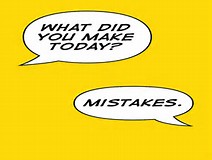If you plan to set your SME loose to build your training program from scratch, give them some upfront direction to get them off to a sure start. Perhaps you are asking them to do a knowledge dump into your software or learning app or will they be delivering audio, video, slides or articles. Before you send them the log in information and disappear, make sure you have given them enough direction so they can be successful in their efforts to build a great knowledge resource.
Here are a few essential Do’s and Don’ts to keep them out of the weeds and focused on the task at hand.
DO:
- Schedule a pre-launch or pre-build meeting where you familiarize them with the goals of the project. Explain why the project is necessary and what it will achieve for the business.
- If you have learning objectives, be very clear about what the learner should be able to DO with the knowledge (assemble a widget, lead a team meeting, sell something, etc) so they can deliver steps or information that leads to outcomes.
- Familiarize them with the software or whatever platform they will be using to impart their knowledge. Make them aware of all its features, shortcuts and capabilities so they can be most efficient. Make sure they have access to a tech person to answer questions.
- Give them an approximate length of either the full project or chunk it out in time or word count limits. A general outline can help keep them on track.
- Give them a deadline and check in (at least!) at the halfway mark to make sure they can meet it.
DON’T:
- Rely on the SME to give you exactly what you need. Ask specific questions or give them an outline.
- Ignore them after they’ve started. Check in with them soon after they’ve begun to make sure they are able to do what you have asked. Provide corrective direction early.
- Involve them in discussions about look, feel, graphic design. Perhaps you can share it after they’ve delivered their content if their input is needed, valued or if they are interested.
- Distract the SME with unrelated questions or peripheral requests. Keep them focused on the learning objectives and the outline, if you’ve got one.
- Ask them to build assessments and exercises. You can involve them in that role after the main information is complete.
Role clarity is key to success in these partnerships. As the training professional and instructional designer, you can keep the goals of the project and the steps in your line of sight and that frees your experts to deliver their content in a structured way under your guidance.
Sex, Drugs and Russian Hacks
As an FYI to my readers, I enjoy receiving comments and having discussions with you. We have a comment filter set because sometimes spam gets through. Some weeks we may get one or two pieces of spam, but some weeks we get more than 50. Usually they are easy to spot because they are advertisements for sex websites, online pharmacies and lately they are in what appears to be Russian, as well. We have to manually delete each one to avoid inadvertently deleting legitimate comments.
If your comment doesn’t appear right away, it is because we go through each comment to separate the real readers from the bots. We will eventually update our system and put in a bot filter on the front end. For now, thank you for your patience.
And please do comment below. We’ll be looking for it!





